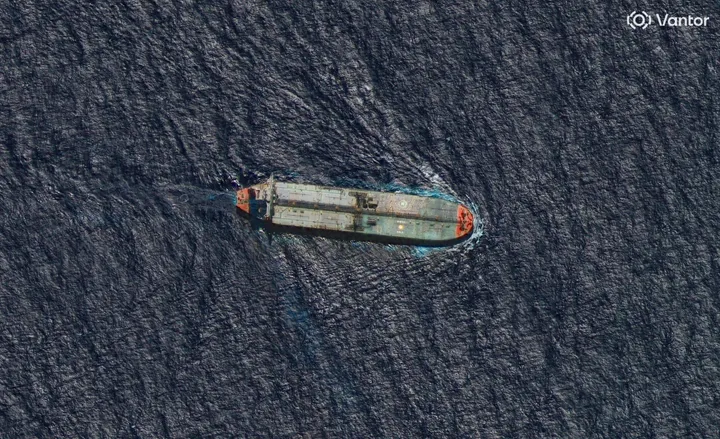The year 2020 has tied with 2016 as the world’s warmest year on record, rounding off the hottest decade globally as the impacts of climate change intensified.
After an exceptionally warm winter and autumn in Europe, the continent experienced its hottest year on record in 2020, while the Arctic suffered extreme heat and atmospheric concentrations of planet-warming carbon dioxide continued to rise, the European Union's Copernicus Climate Change Service said on Friday.
Scientists said the latest data underscored the need for countries and corporations to slash greenhouse gas emissions quickly enough to bring within reach the goals of the 2015 Paris Agreement to avoid catastrophic climate change.
"The extraordinary climate events of 2020 and the data from the Copernicus Climate Change Service show us that we have no time to lose," said Matthias Petschke, Director for Space in the European Commission, the EU's executive arm. The bloc's space programmes include the Copernicus earth observation satellites.
READ MORE: 2020: A year of raging wildfires, floods and scorching temperatures
Highest ever recorded
In 2020, temperatures globally were an average of 1.25 degrees C (2.7 degrees F) higher than in pre-industrial times, Copernicus said. The last six years were the world's hottest on record.
The Paris accord aims to cap the rise in temperatures to "well below" 2 degrees C and as close as possible to 1.5 degrees C to avoid the most devastating impacts of climate change.
"The key here is to... reduce the amount we emit," Copernicus senior scientist Freja Vamborg told Reuters.
Last year also saw the highest temperature ever reliably recorded, when in August a California heat wave pushed the temperature at Death Valley in the Mojave Desert up to 54.4C (129.92°F).
The Arctic and northern Siberia continued to warm more quickly than the planet as a whole in 2020, with temperatures in parts of these regions averaging more than 6C above a 30-year average used as a baseline, Copernicus said.
The region also had an "unusually active" wildfire season, with fires poleward of the Arctic Circle releasing a record 244 million tonnes of CO2 in 2020, over a third more than in 2019.
Arctic sea ice continued to deplete, with July and October both setting records for the lowest sea ice extent in that month.
READ MORE: Guterres: Humanity is waging war on nature
Natural disasters to intensify
Scientists who were not involved in the study said it was consistent with growing evidence that climate change is contributing to more intense hurricanes, fires, floods and other disasters.
In the United States, the costs in lives and damage is fast rising, said Adam Smith, a climate scientist with the National Oceanic and Atmospheric Administration (NOAA).
"We need another dictionary to help us describe how these extremes continue to play out and unfold year after year," said Smith, who tracks climate-related disasters that cause more than a billion dollars worth of damage.
Smith said that the 16 billion-dollar disasters that occurred in the United States in the first nine months of 2020 matched previous annual records set in 2011 and 2017.
A preliminary tally found that 13 of last year's disasters led to at least 188 deaths and costs of $46.6 billion, Smith said. NOAA was to release a complete survey of damages in 2020 at 1600 GMT (1100 a.m. EST) on Friday.
Tuni glacier is disappearing
Bolivia's Tuni glacier is disappearing faster than initially anticipated, according to scientists in the Andean nation, a predicament that will likely make worse water shortages already plaguing the capital La Paz, just 60 km away.
Scientists from the Universidad Mayor de San Andrés (UMSA), who monitor the Tuni and other regional glaciers, told Reuters the once sprawling glacier had been reduced to just one square kilometer.
Where once they had predicted it would last through 2025, now they say its disappearance is imminent.
"This entire sector was once covered with ice," said Dr. Edson Ramírez, a university glaciologist. Across much of the glacier's former path, now only discolored rock remains, exposed for the first time in centuries.
Though the glacier has been receding since the Little Ice Age, when massive ice fields topped many Andean mountains, the fast-changing climate has accelerated the process, according to the Bolivian scientists.
Torrential rains and drought have become more common, and mountain snows less predictable, they said.
The changing climate and fast-disappearing glaciers have coincided with a move from the countryside to the cities of Bolivia, researchers say, pressuring already faltering water sources.
While the populations located at the foot of the Andes do not depend entirely on water from Bolivia's high Andean glaciers, the mountain ice has fed rivers used for irrigation of crops and at least 20 percent of La Paz' water supply, the scientists say.
READ MORE: Brazil's Amazon sees record deforestation under Bolsonaro administration
























